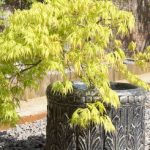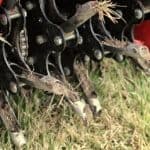Last updated on March 9th, 2022
Our site is reader supported, this means we may earn a small commission from Amazon and other affiliates when you buy through links on our site.
There are hundreds upon hundreds of Rhododendrons and Azaleas to choose from, and you have likely even seen some dwarf Rhododendrons in your local nursery and garden centres. These dwarf varieties can be effectively grown in pots, although because Rhododendrons are shallow-rooted even some of the larger varieties will grow well in pots too.
So, whether you have a limited amount of space in your garden or you just want to showcase the Rhododendron as a focal point, container growing is a wonderful way to include your favourite plants. But in order to grow Rhododendrons in pots, you need to make sure that you pick the right type of plant, the right pot, integrate the most appropriate well-drained compost, and care for them long term.
Read our extensive guide on growing Rhododendrons here.
Choosing the right variety – Ideally a dwarf variety
If you are going to grow a Rhododendron or Azalea in a pot, you should try and find a dwarf variety ideally. If you get a variety that is smaller, you won’t need to contend with a great deal of pruning or shaping further down the line. Moreover, you won’t have to worry about choosing a very large container because the larger varieties obviously require a larger pot.
Instead, you can simply purchase a smaller variety and a regular-sized pot. Some of the most popular dwarf varieties include the Rhododendron yakushimanum cultivars, the ‘Ostbo’s Red Elizabeth’ and the Rhododendron ‘Lutescens’ which is a deciduous variety.
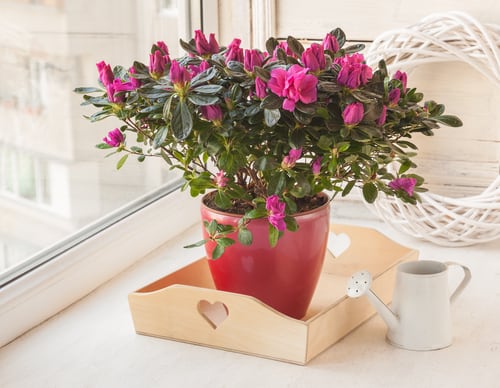
Choosing a Pot
When you go about choosing a pot for your Rhododendrons you must take into consideration the eventual size the Rhododendron will become and not the size it is now. The size of your plant and the size of your container should be the same. Essentially, if you buy your Rhododendron from a garden centre or a nursery you want to select a pot that is approximately one-third larger than the container in which the Rhododendron was supplied. You don’t want to go too large, they are best potted into larger pots gradually at first, every few years.
In addition to size, you need to think about the drainage. While most containers come with some drainage holes built into the bottom, these are typically insufficient for plants that need extra drainage, like the Rhododendron which is prone to root rot. To that end, depending on the material that you choose for the container you can always add additional drainage holes at the bottom. If you have a plastic container for example, and you see that the bottom has four holes about the size of a tiny button you might want to consider drilling more holes around the perimeter.
The top reason that Rhododendrons fail when grown in containers or pots is simply because of poor drainage. Don’t forget to add plenty of crockery to the bottom of the pot as well so that the holes don’t get blocked.
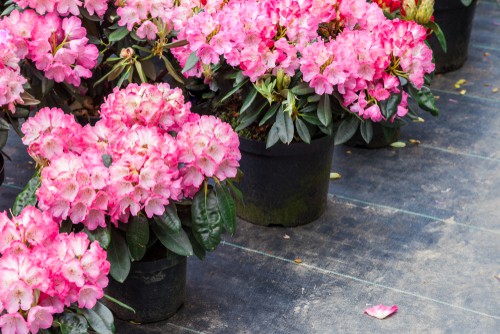
TOP TIP – Rhododendrons’ root structures are shallow so they prefer wider, shallow containers rather than tall narrow containers.
The Best Compost for Rhododendrons
Rhododendrons should be grown in a container with a potting mix designed for Rhododendrons, Azaleas or other acid-loving plants. This type of potting mix has a high level of acidity to it. Rhododendrons need ericaceous compost that is rich in acidity.
In fact, many gardeners who have heavily alkaline soil in their garden can still grow a Rhododendron in a container specifically. This type of plant is not something you can grow in alkaline soil just by amending the soil here and there because it simply won’t work. To that end, container growing with highly acidic compost is a wonderful solution for those who find themselves in this predicament.
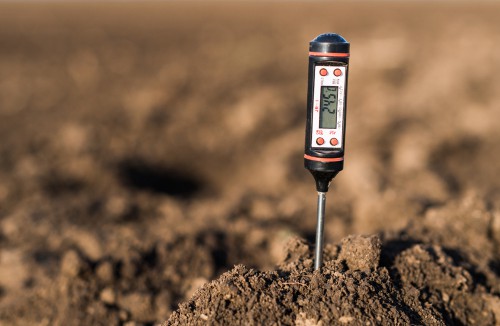
Watering and Feeding
Watering
Rhododendrons need a lot of water and prefer moist soil, however, they don’t like wet soil which is why it must be well-draining. They aren’t naturally grown in areas that are wet like a swamp or the edge of a lake, but they do best if they get access to ample rainwater as their main source of watering.
Even in containers, this is true so if you have to supplement for a few months during the summer, you might notice the leaves turning yellow which is indicative of hard water. This is usually what happens if you use tap water and you live in a hard water area. If you can, it’s recommended that you collect rainwater and then use that to supplement any watering requirements.
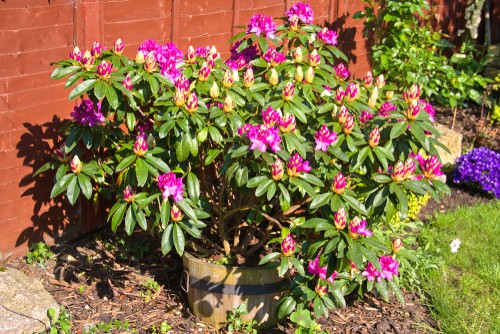
Feeding
The plants should be placed anywhere they get partial or dappled shade. They need access to sunlight but at the same time, they don’t want too much sunlight because this can scorch the foliage and the flowers. Given that they are acid-loving it’s important to apply a fertiliser every spring that is specially designed for acid-loving plants. Sometimes it is referred to as an ericaceous fertiliser.
Pruning
Rhododendrons don’t need a lot of pruning. The most you should be doing is removing any dead or diseased parts of the bush as soon as you see them, and deadheading the spent flowers once they reach maturity. If you need to restrict the size of your pot-grown Rhododendron you can prune it for that purpose. Rhododendrons will respond to hard cutting back but this is usually not something you need to do with a container plant.
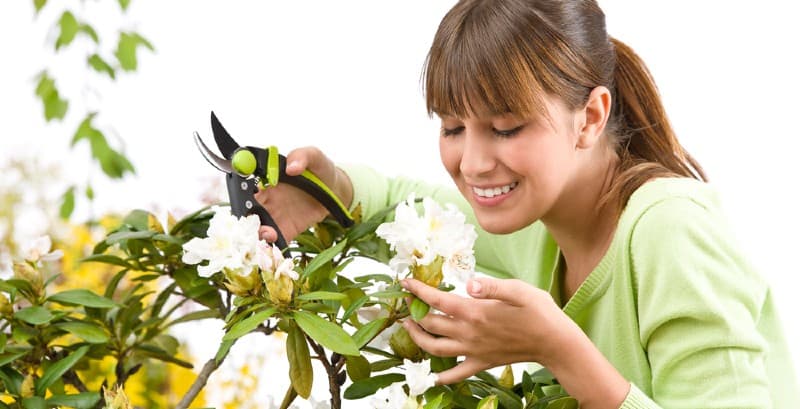
Aftercare
If you have enjoyed your Rhododendron this season and you want to enjoy more of it you can propagate them from cuttings or using seed propagation. Cuttings should be done with growth from the current year at the end of summer or autumn. You can also propagate by seed in January.
Learn about why your Rhododendron might have drooping leaves here.

